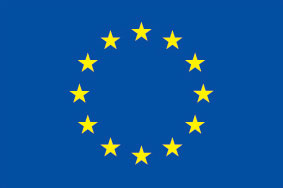China’s pork market continues to evolve amid structural reforms, oversupply, and shifting international trade dynamics. During October 2025, domestic prices remained historically low, reflecting the ongoing cyclical downturn. In the first week of the month, the national average price of weaned piglets was 27.23 yuan per kilogram (down 3.6% week-on-week and 26.6% year-on-year), while live hogs averaged 12.90 yuan per kilogram, a 2.8% weekly and 29.5% annual decline. [1] By the third week, live pig prices showed a modest rebound to 12.32 yuan per kilogram, up 0.2% week-on-week but still down 32.2% year-on-year. Piglet prices continued to fall, reaching 25.13 yuan per kilogram, while pork averaged 23.11 yuan per kilogram, down 1.1% week-on-week and 22% year-on-year. Regional variations persisted, with the Southwest recording the highest live pig prices and Central China the lowest. [2]
Major domestic producers such as MuYuan, Wen’s, and New Hope reported consecutive months of price declines, with September average selling prices down roughly 30% year-on-year. The persistent weakness is primarily attributed to oversupply, stemming from high breeding-sow inventories in late 2024, which fuelled a surge of market-ready hogs in mid-2025. Analysts note that summer expectations of rising prices prompted farmers to delay sales, but when prices failed to recover, panic-driven liquidation intensified the slump. [3]
Despite the downturn, market fundamentals are beginning to stabilise. Dr Wang Zuli, Chief Expert for Hog Industry Monitoring and Early Warning at China’s Ministry of Agriculture and Rural Affairs, highlighted that China’s pork industry is entering a “micro-profit era,” characterised by smaller price swings, improved long-term equilibrium, and greater predictability. Seasonal rallies may still occur, but the era of extreme volatility, once driven by the traditional “hog cycle”, is fading. [4]
Efficiency gains are reshaping the sector. Between 2013 and 2024, China’s breeding sow inventory declined by 11.23 million head (21.6%), while total pork production remained steady, indicating significant productivity improvements through better genetics and higher average market weights. Geographic restructuring has also emerged, with the industry shifting toward a “southern breeding, northern finishing” model, concentrating sow inventories in southern provinces while finishing occurs predominantly in the north. These reforms, combined with government-led capacity controls, aim to reduce overcapacity, stabilise prices, and enhance sustainability.
While piglet prices showed a clear downward trend in recent months, analysts note that they remained relatively resilient throughout 2025, particularly compared to market hogs. Dr. Wang attributes this to the emergence of new buyer categories, including former backyard farmers, expanding large-scale farms, small and mid-sized feed companies integrating downstream, and regional fattening platforms, particularly in Shandong province. However, he warns that any reversal in these demand segments could trigger renewed price fluctuations.
On the policy front, the Chinese government continues to encourage industry transformation. Measures to trim production among overcapacity enterprises are being promoted as a long-term strategy to balance supply and demand. The state is also guiding efficiency improvements to reduce the need for breeding stock, reflecting a broader objective to redefine the industry while maintaining stable pork output. USDA forecasts suggest that overall swine and pork production will remain stable in 2026, with average sow inventories holding steady and piglet output supporting consistent supply. However, lower carcass weights, flat domestic demand, and cautious traders are expected to limit further price recovery. [5]
International trade dynamics add another layer of complexity. China has maintained good relations with Russia, expanding the number of authorised pork suppliers and increasing the range of products allowed for export. [6] Russian exports to China reached $12.4 million in July 2025, a record since the resumption of trade in late 2023, with beef and poultry also showing strong growth. [7] Conversely, US access remains constrained due to ongoing regulatory uncertainty, retaliatory tariffs, and port fees applied to US-flagged vessels. [8] As a result, Chinese importers are exercising caution, reducing shipments from the US, and shifting toward alternative suppliers.
This dynamic international landscape offers European pork exporters a strategic opportunity. Spain has reinforced its position as a leading European supplier to China by signing a Memorandum of Understanding with the China Chamber of Commerce for Import and Export of Foodstuffs (CFNA) during the Spain–China 2025 Trade and Investment Forum. The agreement, part of a broader institutional mission supported by ICEX Spain Export and Investments and the Spanish Ministry of Economy, aims to strengthen cooperation in sanitary protocols, market access, promotion, innovation, and sustainability. INTERPORC executives emphasised that the MoU consolidates trust, quality, and food safety credentials, establishing a durable presence in a strategically important market. Chinese representatives, including Vice Minister Ling Ji and Li Na of MOFCOM, recognised Spain’s contribution to stabilising supply chains and its role as a reliable European pork supplier. [9]
Looking ahead, European exporters may benefit from several converging factors. China’s pork market is entering a phase of relative stability and structural transformation: domestic prices remain low but increasingly reflect efficiency gains and government-led capacity control, while demand for piglets and selective imports continues to provide resilience. Although domestic supply remains ample, structural adjustments are creating space for reliable, high-quality imports aligned with food safety and sustainability standards.
The recent imposition of retaliatory tariffs on EU pork introduces short-term uncertainty; however, their impact may be contained given China’s need to diversify supply sources and maintain price stability. Moreover, European products continue to enjoy a strong reputation for quality, traceability, and compliance, reinforcing their position in the premium and processed segments. At the same time, global trade uncertainties, especially with the US, create comparative advantages for EU suppliers. In this context, maintaining a proactive presence, cultivating trust with Chinese authorities, and emphasising quality, sustainability, and long-term partnerships will be essential for European companies seeking to strengthen their role and capture emerging opportunities in China’s evolving pork market.
[1] Zhang, D. (October 19, 2025). Market Situation of China’s Livestock Products in the First Week of October. LinkedIn.
[2] Zhang, D. (October 29, 2025). China’s Livestock Product Market Prices in the Third Week of October. LinkedIn.
[3] Zhang, D. (October 24, 2025). Pork Prices Drop for Ten Consecutive Weeks! Experts: China’s Hog Slaughter Volume Expected to Increase Overall in the Next Six Months. LinkedIn.
[4] 牧食记-AgriPost.CN (July 15, 2025). Market Trend: China’s Pig Industry Enters a New Phase of Stability.
[5] Marianetti, J., & FAS China Staff (September 5, 2025). China: Livestock and products annual. Report No. CH2025-0165. USDA, Foreign Agricultural Service.
[6] Interfax. (September 2, 2025). China assuming constructive position to boost number of Russian pork suppliers.
[7] Sputnik (August 8, 2025). 今年7月俄罗斯对华猪肉出口额达到中国恢复进口后最高值.
[8] Yin, Y. (October 14, 2025). China starts charging special port fees on US ships as countermeasure. Global Times.
[9] Agrodiario (October 13, 2025). Interporc refuerza su cooperación con China con la firma de un Memorando de Entendimiento.




